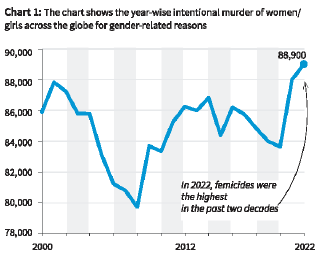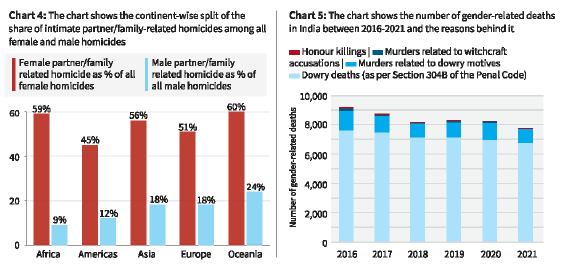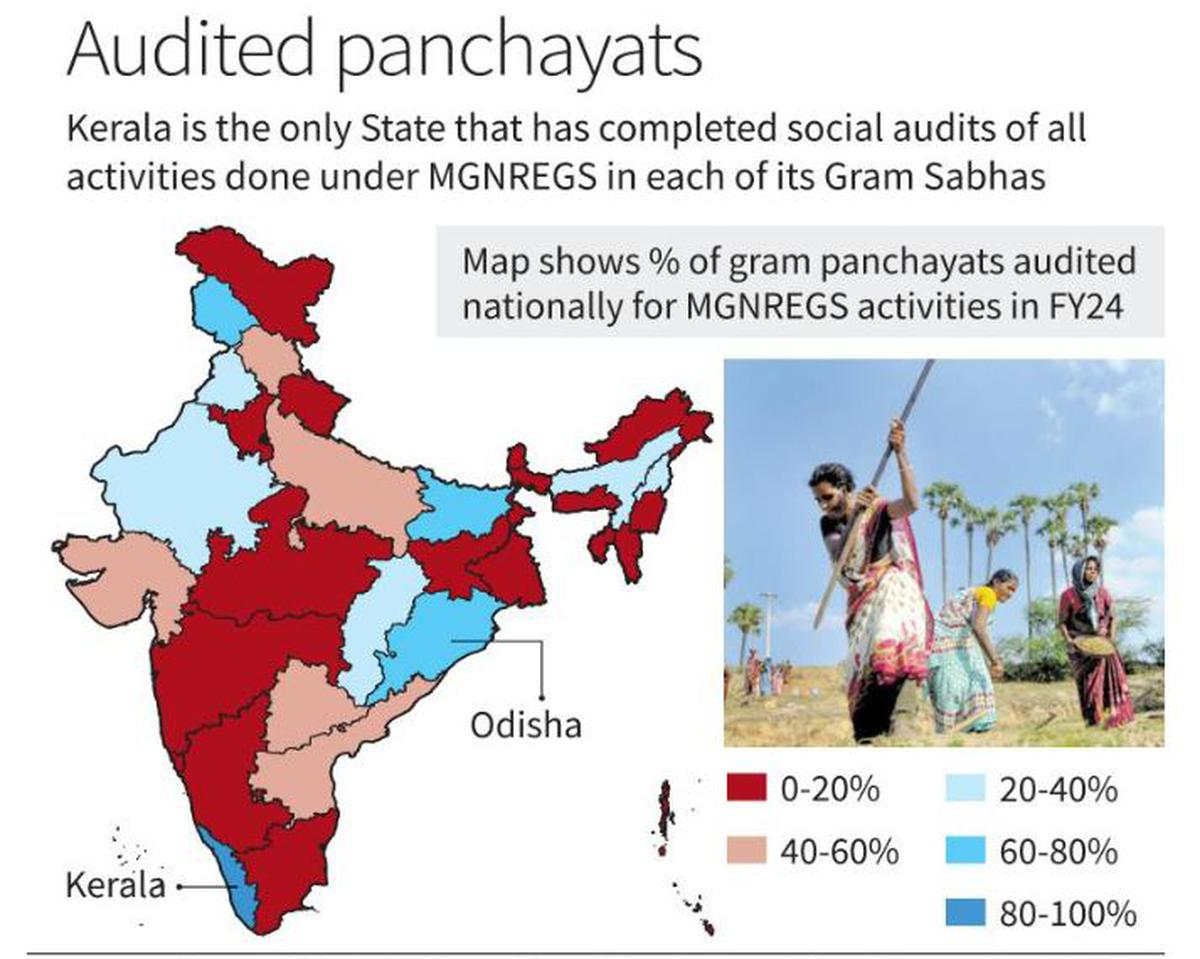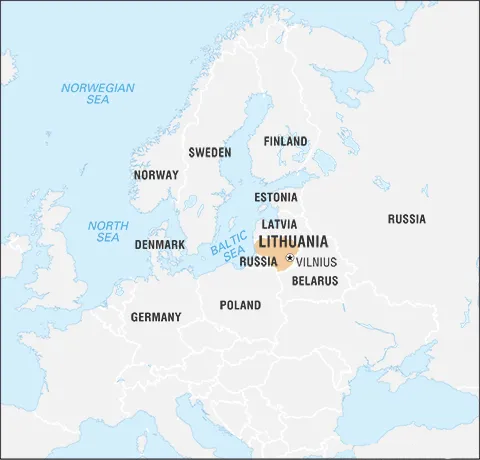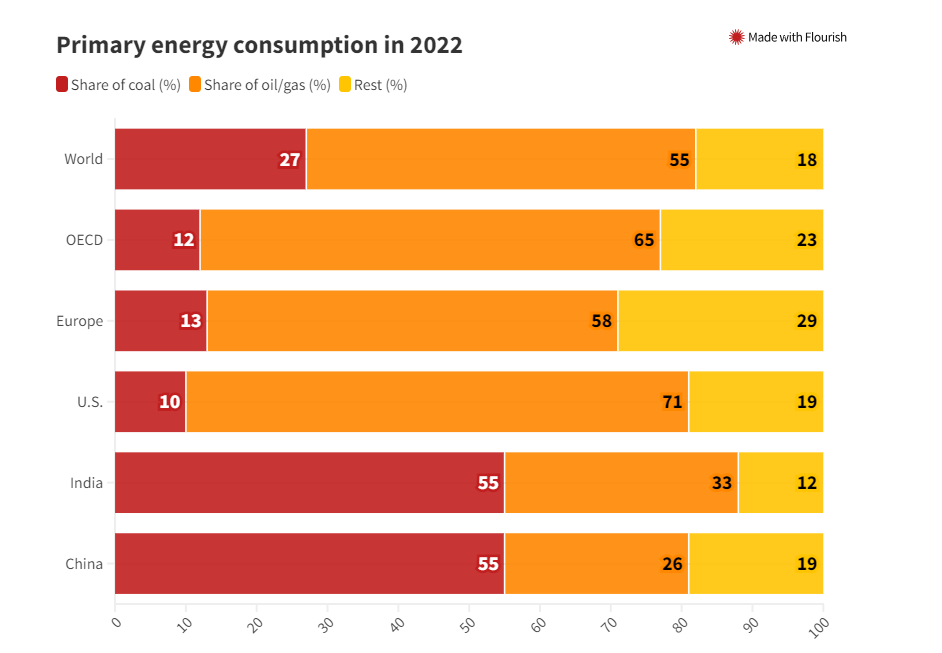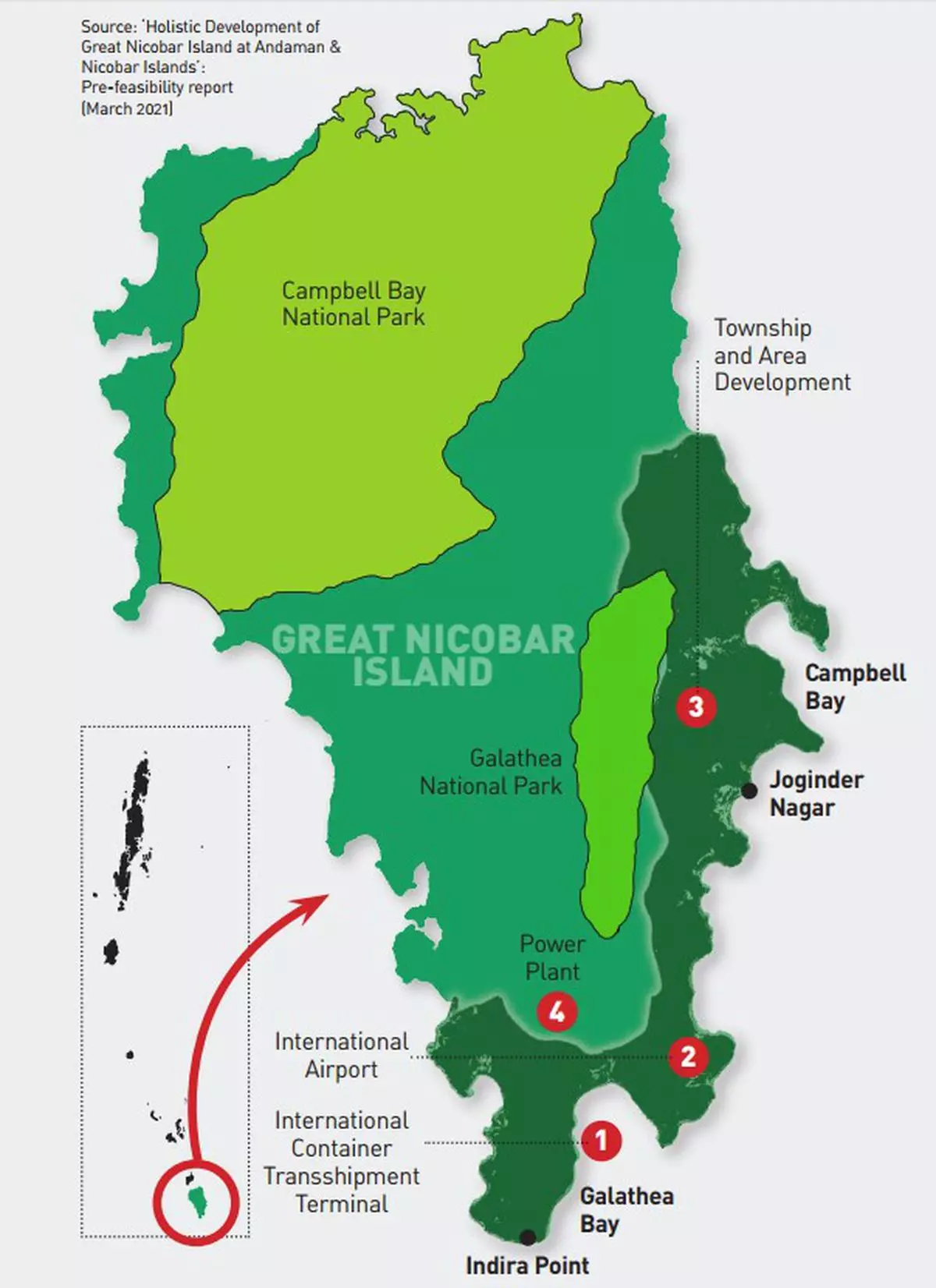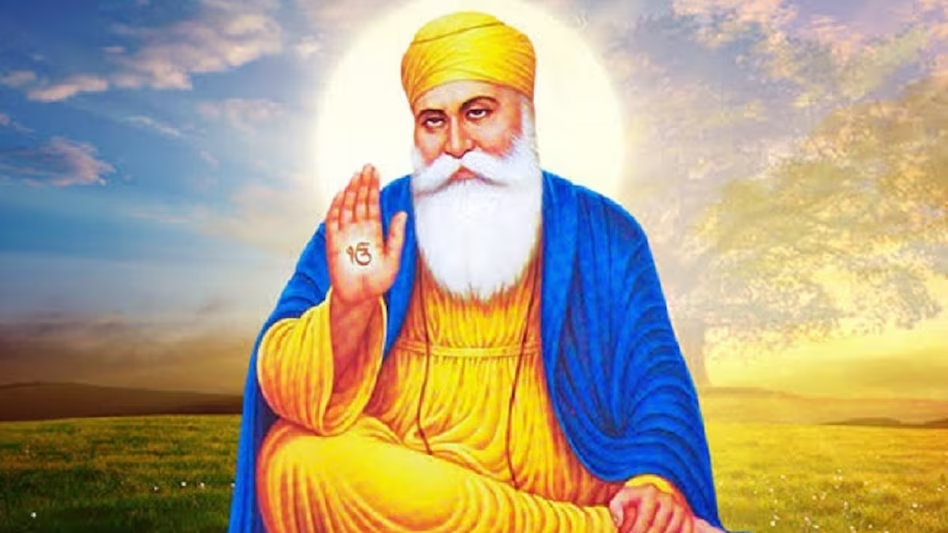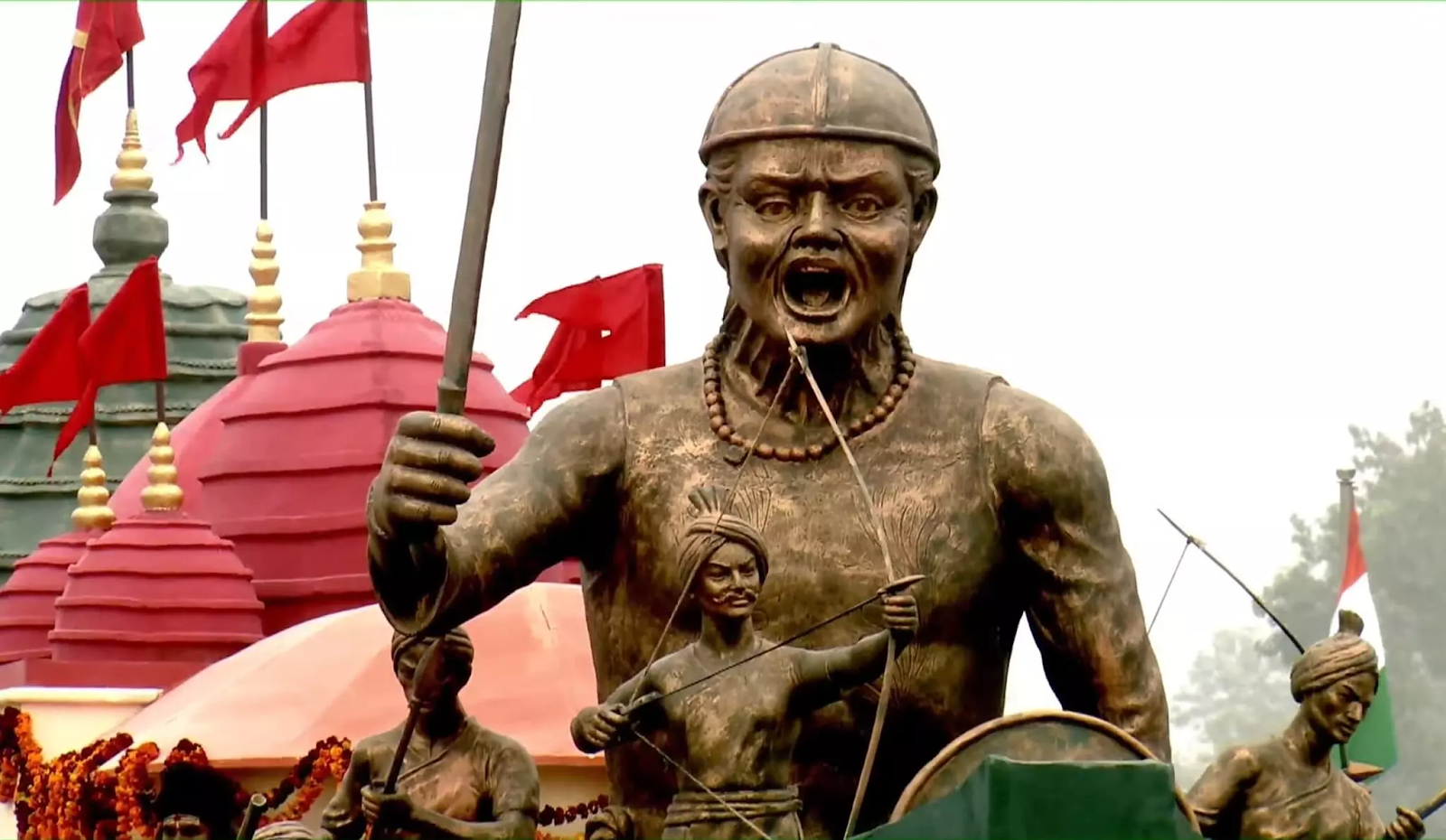Social Justice
Gender-Related Killings of Women and Girls
For Prelims: Gender-related killings of Women and Girls, United Nations Office on Drugs and Crime (UNODC), Femicide/Feminicide, United Nations International Drug Control Program (UNDCP).
For Mains: Gender-related killings of Women and Girls, Welfare schemes for vulnerable sections of the population by the Centre and States and the performance of these schemes.
Why in News?
Recently, the United Nations Office on Drugs and Crime (UNODC) and UN Women released a study titled-Gender-related killings of women and girls (femicide/feminicide), revealing an increase in gender-related killings of women and girls in 2022.
What is Femicide/Feminicide?
- Femicide or feminicide refers to the deliberate killing of women or girls purely because they are female. It’s a gender-based crime rooted in deeply ingrained societal attitudes and discrimination against women.
- Femicide differs from homicide in that it specifically targets individuals due to their gender, often involving situations where women are killed by their partners, family members, or individuals due to reasons like misogyny, gender-based violence, or cultural beliefs that devalue women.
What are the Key Highlights of the Study?
- Femicide Trends:
- Globally, nearly 89,000 women and girls were killed intentionally in 2022, the highest yearly number recorded in the past two decades.
- While the overall number of homicides globally has begun to fall in 2022 after a spike in 2021, the number of female homicides are not decreasing.
- Perpetrator-Victim Disparity:
- Women are more likely to be victims of intimate partner or family-related homicides compared to men.
- While most homicides worldwide are committed against men and boys (80% in 2022), women and girls are disproportionately affected by homicidal violence in the home: they represent approximately 53% of all victims of killings in the home and 66% of all victims of intimate partner killings.
- Continental Trends:
- Africa reported the highest number of intimate partner/family-related homicides of women in 2022, surpassing Asia for the first time in 13 years.
- The Americas, while reporting fewer cases, exhibited relatively higher rates of such femicides per 100,000 female population.
- Regional Variations and Recent Changes:
- With an estimated 20,000 victims in 2022, Africa has – for the first time since 2013 surpassed Asia as the region with the highest number of victims in absolute terms.
- In 2022, Africa was also the region with the highest number of victims relative to the size of its female population (2.8 victims per 100,000 women).
- Between 2010 and 2022, Europe witnessed an average reduction in the number of female intimate partner/family-related homicides (by 21%), albeit with differences across sub-regions and with some setbacks in Western and Southern Europe, especially since the onset of the Covid-19 pandemic in 2020.
- India-Specific Insights:
- India experienced a slight decline in gender-based killings over the past decade, although issues like dowry-related deaths, honour killings, and witchcraft accusations persist.
- Dowry-related reasons consistently topped the list as the leading cause of gender-related deaths in India, with honour killings and witchcraft-related murders forming a smaller percentage.
What is the United Nations Office on Drugs and Crime (UNODC)?
- It was established in 1997 and was named as a UNODC in 2002.
- It acts as the Office for Drug Control and Crime Prevention by combining the United Nations International Drug Control Program (UNDCP) and the Crime Prevention and Criminal Justice Division of the United Nations Office at Vienna.
Governance
Social Audits in MGNREGS
For Prelims: Mahatma Gandhi National Rural Employment Guarantee Scheme (MGNREGS), Social Audits, Amrit Sarovar, Jaldoot App
For Mains: Implementation issues with the MGNREGA, Government Policies & Interventions, Issues Relating to Development
Why in News?
Recent data from the Management Information System (MIS) on Social Audit, maintained by the Ministry of Rural Development (MoRD), sheds light on the progress and challenges of the social audit in the Mahatma Gandhi National Rural Employment Guarantee Scheme (MGNREGS).
What is the Progress of Social Audits in MGNREGS?
- According to the data from the MIS on Social Audit, Out of the 34 States and Union Territories, only 6 have surpassed the 50% mark in completing social audits of works done under MGNREGS in gram panchayats.
- Kerala emerges as the frontrunner, achieving 100% coverage of gram panchayats in social audits, showcasing a comprehensive and inclusive approach.
- Apart from Kerala, five other states have surpassed the 50% mark in social audit coverage, namely Bihar (64.4%), Gujarat (58.8%), Jammu and Kashmir (64.1%), Odisha (60.42%), and Uttar Pradesh (54.97%).
- Only three States have covered 40% or more villages Telangana (40.5%), Himachal Pradesh (45.32%) and Andhra Pradesh (49.7%).
- Other than Telangana, among the poll-bound States, the numbers are really low — Madhya Pradesh (1.73%), Mizoram (17.5%) Chhattisgarh (25.06%), and Rajasthan (34.74%).
What is a Social Audit?
- About:
- Social audit is a process of reviewing official records and determining whether state reported expenditures reflect the actual money spent on the ground.
- Social audit is the inbuilt anti-corruption mechanism in the MGNREGA Act, 2005.
- It involves quality checks of infrastructure created under the MGNREGA, financial misappropriation in wages, and checking for any procedural deviations.
- Objectives:
- Aimed at empowering local communities, social audits enable citizens to scrutinize and assess the efficiency and effectiveness of government initiatives.
- Legal Framework:
- In the context of MGNREGS, Section 17 of the Mahatma Gandhi National Rural Employment Guarantee Act (MGNREGA) mandates the gram sabha to monitor the execution of works, providing a legal basis for social audits.
- The Audit of Scheme Rules, 2011, also known as the Mahatma Gandhi National Rural Employment Guarantee Audit of Schemes Rules, 2011, were developed by the Ministry of Rural Development in collaboration with the Comptroller and Auditor General (CAG) of India.
- These rules outline the procedures for social audits and the duties of various entities, including the Social Audit Unit (SAU), state government, and field workers of MGNREGA, to be followed nationwide.
- Social audit units operate independently of the implementing authorities, ensuring an unbiased evaluation of the programs.
- To ensure the autonomy of Social Audit Units, they are entitled to funds equivalent to 0.5% of the MGNREGA expenditure incurred by the state in the previous year.
- In cases where states fail to conduct regular social audits, the Centre has the authority to withhold funds allocated under MGNREGS.
- Challenges in Implementation:
- Limited awareness of the legal framework for social audits, especially among local communities, can impede their active involvement in the process.
- Limited financial resources for Social Audit Units can compromise their ability to carry out thorough and effective audits, restricting the scope of their activities.
- The intrusion of political influence can hinder the impartiality of social audits, impacting the authenticity and objectivity of the evaluation process.
- Lack of cooperation and coordination of the implementing authorities and the social audit units.
- Lack of follow-up and action on the findings and recommendations of the social audit reports.
- Lack of protection and support for the social auditors and the whistle-blowers who face threats and harassment from the vested interests.
What is MGNREGS?
- About:
- The MGNREGS is one of the largest work guarantee programmes in the world launched in 2005 by the Ministry of Rural Development.
- The MGNREGA is the legal framework that enables the implementation of the scheme and gives the right to work to the rural poor.
- Under MGNREGS a total of 11.37 Crore households availed employment and a total of 289.24 crore person-days employment has been generated (till 15th December 2022).
- The MGNREGS is one of the largest work guarantee programmes in the world launched in 2005 by the Ministry of Rural Development.
- Objectives:
- The scheme aims to provide at least 100 days of guaranteed wage employment in a financial year to rural households whose adult members volunteer to do unskilled manual work.
- Strengthening the livelihood resource base of the poor.
- Proactively ensuring social inclusion.
- Strengthening Panchayati Raj Institutions (PRIs).
- Achievements of MGNREGA:
- GIS-Based Planning of Gram Panchayats (GPs):
- The Ministry has initiated an integrated holistic planning of the Gram Panchayats based on watershed development principles (ridge to valley approach) using the Geographical information system (GIS).
- As of December 2022, plans for 2,62,654 GPs have been designed in a saturation mode for three years of planning.
- The Ministry has initiated an integrated holistic planning of the Gram Panchayats based on watershed development principles (ridge to valley approach) using the Geographical information system (GIS).
- National Electronic Fund Management System (NeFMS)/ DBT:
- Under the MGNREGA, 99% of wage seekers are receiving their wages directly into their Bank/Post Office accounts.
- It is a big step towards transparency and timely release of wages.
- SECURE:
- SECURE is an online application designed and developed specially for the estimate preparation and approval for MNNREGA works.
- Skill Development:
- The project “UNNATI'' intends to upgrade the skill-base of the MGNREGA workers, and thereby improve their livelihoods, so that they can move from the current partial employment to full employment.
- As of December 2022, 27,383 candidates have been trained.
- The project “UNNATI'' intends to upgrade the skill-base of the MGNREGA workers, and thereby improve their livelihoods, so that they can move from the current partial employment to full employment.
- GIS-Based Planning of Gram Panchayats (GPs):
- New Initiatives for the implementation of the programme:
UPSC Civil Services Examination, Previous Year Questions (PYQs)
Q. Among the following who are eligible to benefit from the “Mahatma Gandhi National Rural Employment Guarantee Act”? (2011)
(a) Adult members of only the scheduled caste and scheduled tribe households
(b) Adult members of below poverty line (BPL) households
(c) Adult members of households of all backward communities
(d) Adult members of any household
Ans: (d)


Indian Polity
Governor’s Powers Over State Bills
For Prelims: Governor’s Powers Over State Bills, Supreme Court (SC), Article 200 of the Constitution, Article 201, Article 31A of the Constitution.
For Mains: Governor’s Powers Over State Bills, Government policies and interventions for development in various sectors and issues arising out of their design and implementation.
Why in News?
Recently, the Supreme Court (SC) of India has stated when the Governor chooses to withhold assent to a Bill, it is mandatory for them to follow a specific course of action outlined in Article 200 of the Constitution.
- The key aspect of Article 200 is that it mandates the Governor to communicate their reasons for withholding assent and prompt the Legislature to reconsider the Bill.
What is the Ruling of the Supreme Court?
- If a Governor refuses to approve a Bill, they have to follow Article 200.
- The SC has held that if a Governor decides to withhold assent to a Bill, then he has to return the bill to the legislature for reconsideration.
- The Governor's withholding of assent without the necessary step of communicating the need for the Legislature to reassess the Bill violates constitutional principles.
- The elected Legislature has the final say on the Bill, and the Governor's message doesn't force them to agree. That is, once the House re-passes the returned Bill, with or without amendments, the Governor has no choice but to grant consent.
- The ultimate authority to accept or reject a Bill lies with the elected Legislature, and the Governor's message does not bind the legislative body.
What are the Governor’s Powers over Bills?
- Article 200:
- Article 200 of the Indian Constitution outlines the process for a Bill passed by the Legislative Assembly of a State to be presented to the Governor for assent, who may either assent, withhold assent or reserve the Bill for consideration by the President.
- The Governor may also return the Bill with a message requesting reconsideration by the House or Houses.
- Article 201:
- It states that when a Bill is reserved for the consideration of the President, the President may assent to or withhold assent from the Bill.
- The President may also direct the Governor to return the Bill to the House or Houses of the Legislature of the State for reconsideration.
- Options Available with the Governor:
- He may give assent, or he can send it back to the Assembly requesting it to reconsider some provisions of the Bill, or the Bill itself.
- He may reserve the bill for the consideration of the president. The reservation is obligatory where the bill passed by the state legislature endangers the position of the state high court. However, the governor can also reserve the bill if it is of the following nature:
- Against the provisions of the Constitution
- Opposed to the Directive Principles of State Policy (DPSP).
- Against the larger interest of the country
- Of grave national importance
- Deals with compulsory acquisition of property under Article 31A of the Constitution.
- Another option is to withhold the assent, but this is not normally done by any Governor because it would be an extremely unpopular action.
Can the Governor withhold His Assent to a Bill in Exercise of His Discretionary Powers?
- While a plain reading of Article 200 suggests that the Governor can withhold his assent, experts question whether he can do so only on the advice of the Council of Ministers.
- The Constitution provides that the Governor can exercise his executive powers only on the advice of the Council of Ministers under Article 154.
- The larger question is why a Governor should be allowed to withhold assent when the Bill is passed by the Assembly.
What are the Issues with Pending Bills?
- Delay in Decision-Making:
- The Governor's failure to take a decision on the Bills passed by the legislature leads to a delay in decision-making, which affects the effective functioning of the state government.
- When the Governor fails to make a decision on a Bill passed by the assembly, it delays the implementation of policies and laws.
- Undermines the Democratic Process:
- The Governor, who is appointed by the Centre, can use his powers to delay or reject Bills passed by state assemblies for political reasons, which undermines the democratic process.
- Public Perception:
- The public often views pending Bills with the Governor as a sign of inefficiency or even corruption in the state government, which can damage the government's reputation.
- Lack of Accountability:
- When the Governor withholds assent, he does not provide any reason for his decision.
- This lack of accountability undermines the principles of transparency and accountability in governance.
Way Forward
- Governors should adhere to the guidelines of Article 200, promptly communicating their concerns about Bills and sending them back to the State Legislature for reconsideration. This ensures a proper process and respects the Legislature's authority.
- Clear guidelines and transparent processes can help avoid misunderstandings. Governors should provide transparent reasoning when withholding assent to a Bill, ensuring accountability for their decisions.
- Continuous discussions and legal clarity on the role of Governors in the legislative process might further streamline the procedures and avoid potential conflicts.
Legal Insights: Article 200 of the COI
UPSC Civil Services Examination Previous Year’s Question (PYQs)
Prelims
Q. Which of the following are the discretionary powers given to the Governor of a State? (2014)
- Sending a report to the President of India for imposing the President’s rule
- Appointing the Ministers
- Reserving certain bills passed by the State Legislature for consideration of the President of India
- Making the rules to conduct the business of the State Government
Select the correct answer using the code given below:
(a) 1 and 2 only
(b) 1 and 3 only
(c) 2, 3 and 4 only
(d) 1, 2, 3 and 4
Ans: (b)
Exp;
- Article 163 of the Constitution says that the Governor shall exercise his functions with the aid and advice of the Council of Ministers except for functions which require his discretion.
- Under Article 356 of the Indian Constitution, the Governor of a State can send a report to the President of India recommending imposition of President Rule in the State. This is a discretionary power being conferred upon the Governor. Hence, 1 is correct.
- He appoints the Chief Minister (CM) and other ministers. They also hold office during his pleasure. The appointment of ministers in the State cabinet is not at the discretion of the Governor. He only formally approves the appointment. The discretion comes under CM. Hence, 2 is not correct.
- Governor can reserve certain bills passed by the State legislature for the consideration of the President. In one case such reservation is obligatory, that is, where the bill passed by the State legislature endangers the position of the State High Court. In addition, the
- The governor can also reserve the bill if it is against the provisions of the Constitution, opposed to the Directive Principles of State Policy, against the larger interest of the country, of grave national importance, etc. Hence, 3 is correct.
- He makes rules for the more convenient transaction of the business of a state government and for the allocation among the ministers of the said business. But this power is not under the Governor’s discretion. He acts on the advice of the Council of Ministers. Hence, 4 is not correct.
- Therefore, option (b) is the correct answer


International Relations
India-Lithuania Relations
For Prelims: Klaipeda port, Baltic Countries, Sagarmala Project, India's ITEC program, Neighboring Countries of Lithuania.
For Mains: Major Aspects of India-Lithuania Relations.
Why in News?
Recently, Indian Minister of State for Ports, Shipping, and Waterways and Vice Minister in the Ministry of Foreign Affairs of the Republic of Lithuania, convened in New Delhi to bolster the maritime bilateral relations between India and Lithuania.
What are the Major Highlights of the Meeting?
- Resident Mission Inauguration in Vilnius: The inauguration of India's Resident Mission in Vilnius was commended, highlighting it as a significant step affirming India's commitment to strengthening bilateral relations with Lithuania.
- Bilateral Trade Growth: India emphasized the positive trajectory of bilateral trade, citing a consistent increase to USD 472 million by the fiscal year 2022-23, signifying a steady rise in economic collaboration between the two nations.
- Collaboration on Port Infrastructure and Klaipeda Port's Advantages: Discussions centered on exploring collaboration opportunities, leveraging India's expertise in port infrastructure development.
- This collaboration is aimed at capitalizing on Lithuania's strategic location as a gateway to vital industrial areas in Eastern Europe.
- The spotlight was on the unique advantages of Klaipeda port, notably its year-round ice-free status.
- As the leading Baltic port for container transshipment, it holds a pivotal position in facilitating trade, boasting advantageous land connections to key industrial zones in Eastern Europe.
- Diverse Investment Opportunities: India presented a spectrum of investment avenues to Lithuania across various sectors, including Port Modernization (PPP), Port Connectivity, Coastal Shipping, Maritime Technology, Sagarmala Project, and Decarbonization initiatives, aiming to foster comprehensive economic partnerships and sustainable growth.
What are the Major Aspects of India-Lithuania Relations?
- Historical Ties
- Linguistic Similarities: Lithuanian and Sanskrit languages share linguistic commonalities, suggesting ancient connections.
- Pre-Christian Lithuania worshiped nature and revered a trinity of gods - Perkunas, Patrimpas, and Pikuolis.
- Intellectual Exchange: Vydunas, a 19th-century philosopher, drew parallels between Lithuanian and Hindu spiritual culture, creating a philosophical system inspired by Vedanta.
- Lithuanian travelers like Antanas Poska and Matas Salcius delved into Sanskrit and Indian culture in the 1930s and 1940s.
- Sanskrit became part of Vilnius University's academic curriculum in the 1970s, fostering academic ties between India and Lithuania.
- Linguistic Similarities: Lithuanian and Sanskrit languages share linguistic commonalities, suggesting ancient connections.
- Political Relations:
- Recognition: India acknowledged Lithuania's independence from the USSR in 1991, establishing diplomatic relations in 1992.
- Embassy and Consulates: Lithuania opened its Embassy in New Delhi in 2008 and maintains three Honorary Consuls in India.
- An Honorary Consul of India has operated in Vilnius since 2014.
- India-Lithuania Forum: Initiated in 2010, fostering multi-dimensional ties encompassing culture, education, business, and science.
- Trade Dynamics:
- Major Indian imports From Lithuania: Edible vegetables, wood and articles of wood, textiles, electrical machinery and equipment, iron and steel, optical, photographic and measuring instruments.
- Major Indian Exports to Lithuania: Nuclear boilers and reactors, pharmaceutical products, fish, organic chemicals, tobacco and manufactured tobacco, textile articles, iron and steel.
- Cultural Engagement
- Yoga and Spiritual Interests: Lithuanians exhibit keen interest in Indian cultural traditions, particularly Yoga. Celebrations of International Yoga Day are widespread in Lithuania.
- Indian Technical and Economic Cooperation Programme(ITEC) Program: Over 400 Lithuanian nominees attended various courses under India's ITEC program, fostering mutual learning and cooperation.


Biodiversity & Environment
Balancing Sustainable Energy Goals with Coal Realities
For Prelims: Coal, Sustainable Development, Renewable energy, Paris Agreement, Thermal Power Plants
For Mains: India's Reliance on coal in its Energy Portfolio and its Impact, India’s renewable energy
Why in News?
In the evolving landscape of renewable energy, the clash between traditional and eco-friendly practices is evident.
- Coal, a widely used yet highly polluting energy source, stands as a major hurdle for global sustainability goals.
- Despite efforts to embrace cleaner alternatives, coal remains a significant challenge for achieving sustainable development worldwide.
What is the Role of Coal in the Energy Mix?
- Coal in Global Global Energy Mix:
- In 2022, oil, coal, and gas accounted for 30%, 27%, and 23% of the world’s total energy, while solar and wind energy sources together contributed only 2.4%.
- Coal supplies just over a third of global electricity generation even though it is the most carbon-intensive fossil fuel.
- In 2022, oil, coal, and gas accounted for 30%, 27%, and 23% of the world’s total energy, while solar and wind energy sources together contributed only 2.4%.
- Coal in India’s Energy Context:
- Only 10.4% of India's primary energy consumption is from renewables; coal and oil gas dominate at 55.1% and 33.3% in 2022.
- Coal-fired thermal power plants (TPPs) generated 74.3% of India's electricity during FY 2022-2023, and generation by TPPs continues to grow to meet demand.
- 96% of the coal used by TPPs in India comes from domestic mines and is key to why electricity is so affordable in India.
- India's National Electricity Plan projects that TPP capacity in India will reach 259-262 GW by FY32, from 212 GW in FY23.
- India's per capita energy supply stands at 37% of the global average, highlighting a growing energy demand that aligns with the Human Development Index.
- To balance this with India's long-term goal of reaching net zero by 2070, the country must continue to implement clean coal technologies to reduce the power sector's emissions.
- The efficient operation of TPPs (thermal power plants) is crucial for India to ensure continuous and affordable supply to meet peak and off-peak demands.
- India’s cumulative emissions from fossil fuels and industry between the start of the industrial revolution in 1750 and the end of 2021 are only 3.3% of the global total, far behind those of Europe (31%), the U.S. (24.3%), and China (14.4%).
What are the Environmental and Social Impacts of Coal?
- Coal Quality and Transportation:
- Indian coal contains high levels of fly ash compared to coal from other major coal-mining countries.
- Burning coal with more ash leads to erosion and failure of boiler tubes, affecting plant availability, efficiency, and performance leading to an increase in emissions.
- Transporting unwashed raw coal to power plants located over 500 km away congests transportation systems and results in carbon dioxide emissions and environmental pollution.
- Sulphur Dioxide Emissions:
- Indian coal other than that from Assam and Meghalaya has lower sulphur content compared to coal used in Chinese power plants.
- Tall stacks and favourable weather conditions in India allow sulphur dioxide emissions to disperse far and wide.
- According to the United Nations Intergovernmental Panel on Climate Change, historical sulphur dioxide emissions have created a cooling effect, masking global temperature rise.
- Indian coal other than that from Assam and Meghalaya has lower sulphur content compared to coal used in Chinese power plants.
- Flue Gas Desulphurisers (FGDs):
- Retrofitting existing power plants with FGDs increases specific coal consumption, lowers energy efficiency, and leads to higher emission intensity and temporary plant shutdowns.
- FGD is a process that removes sulfur dioxide (SO2) from exhaust gases.
- Retrofitting FGDs has been delayed in India due to the inability to shut down operating power plants.
- Retrofitting existing power plants with FGDs increases specific coal consumption, lowers energy efficiency, and leads to higher emission intensity and temporary plant shutdowns.
- Employment and Industry:
- The coal sector plays a vital role in industries like power, steel, cement, and aluminium, employing millions.
- Transition to cleaner energy could result in an imbalance in the preservation of jobs and economic stability.
- The coal sector plays a vital role in industries like power, steel, cement, and aluminium, employing millions.
- Energy Access and Affordability:
- Coal contributes significantly to electricity generation, ensuring access and affordability for a large population.
- Transitioning to renewables must consider maintaining affordable and reliable energy access.
- Coal contributes significantly to electricity generation, ensuring access and affordability for a large population.
What are the Strategies to Reduce Coal's Impact on Sustainable Development?
- Efficiency Enhancement in Thermal Power Plants (TPPs):
- Invest in research and development to increase the efficiency of existing coal-fired TPPs.
- Implement advanced technologies and operational improvements to reduce emissions per unit of electricity generated.
- Promotion of Clean Coal Technologies:
- Allocate resources and incentives for the development and implementation of clean coal technologies.
- Prioritize technologies that significantly reduce carbon emissions and improve overall environmental performance.
- Allocate resources and incentives for the development and implementation of clean coal technologies.
- Diversification of Energy Sources:
- Accelerate the deployment of renewable energy sources, such as solar and wind, to decrease dependence on coal.
- Develop policies that encourage a diverse energy mix, ensuring a gradual transition towards cleaner alternatives.
- Accelerate the deployment of renewable energy sources, such as solar and wind, to decrease dependence on coal.
- Global Cooperation for Critical Minerals:
- Collaborate with international partners to secure a stable and diversified supply chain for critical minerals required for battery storage.
- Most of the critical materials required for grid-scale battery storage are controlled by the top three producers – especially China.
- Explore diplomatic avenues to mitigate risks associated with import dependencies on countries like China.
- Batteries might only become cost-effective after 2030, necessitating a focus on other strategies in the interim.
- Collaborate with international partners to secure a stable and diversified supply chain for critical minerals required for battery storage.
- Nuclear Energy Expansion:
- Increase investment and support for nuclear energy as a low-carbon alternative to coal.
- Encourage research and development for small modular nuclear reactors for enhanced efficiency and safety.
- Increase investment and support for nuclear energy as a low-carbon alternative to coal.
- Pumped Storage Projects and Grid Integration:
- Enhance pumped storage projects to efficiently integrate intermittent renewable energy sources like solar and wind into the power grid.
- Develop smart grid technologies for better management of variable energy inputs.
- Washed Coal Mandate:
- Enforce regulations mandating the use of washed coal in TPPs located more than 500 km from mines to reduce environmental impact.
- Integrate coal-washing charges into the tariff determination process to ensure economic feasibility.
- This reduces carbon dioxide emissions and environmental pollution.
- Incentivizing Low-Carbon Technologies:
- Approximately 30% of current power plant capacity in India is based on supercritical or ultra-supercritical technologies.
- Advanced ultra-supercritical technology (AUSC) reduces carbon dioxide emissions by 15% compared to supercritical technology.
- Integrated gasification combined cycle (IGCC) power plants have efficiencies of 46-48% and can capture carbon dioxide.
- Incentivize projects to prove IGCC or AUSC technologies at scale before 2030.
- Encourage NTPC to repurpose some power plant sites for small modular nuclear reactors for zero-carbon electricity generation.
- Low-carbon development is not a choice but a necessity for India, as reflected in its 'Long-term Low-Emissions Development Strategy' submitted to the United Nations Framework Convention on Climate Change and Paris Agreement.
- Encourage research initiatives to explore and develop carbon capture technologies for existing TPPs.
- Transitioning to renewables must consider maintaining affordable and reliable energy access.
- Approximately 30% of current power plant capacity in India is based on supercritical or ultra-supercritical technologies.
- Particulate Emission Reduction:
- Implement a 'graded priority' approach for power plant pollutants, prioritizing the reduction of particulate matter.
- Deploy cost-effective electrostatic precipitators to achieve a 99.97% reduction in particulate emissions.
- Implement a 'graded priority' approach for power plant pollutants, prioritizing the reduction of particulate matter.
UPSC Civil Services Examination, Previous Year Question (PYQ)
Prelims
Q1. Consider the following statements: (2020)
- Coal ash contains arsenic, lead and mercury.
- Coal-fired power plants release sulphur dioxide and oxides of nitrogen into the environment.
- High ash content is observed in Indian coal.
Which of the statements given above is/are correct?
(a) 1 only
(b) 2 and 3 only
(c) 3 only
(d) 1, 2 and 3
Ans: (d)


Important Facts For Prelims
The Constitution Day
Why in News?
The Ministry of Law and Justice, in collaboration with the Indian Law Institute, celebrated Constitution Day on 26th November 2023.
What are the Key Facts About Constitution Day?
- The Constitution Day, also known as National Law Day or Samvidhan Diwas, is celebrated in India on 26th November every year to commemorate the adoption of the Constitution of India.
- On 29th August, 1947, the Constituent Assembly set up a Drafting Committee under the Chairmanship of Dr. B.R. Ambedkar to prepare a Draft Constitution for India.
- On 26th November 1949, the Constituent Assembly of India adopted the Constitution of India, which came into effect on 26th January 1950.
- The Ministry of Social Justice and Empowerment on 19th November, 2015, notified the decision of the Government of India to celebrate 26 November as 'Constitution Day'.
- The day is observed to spread the importance of the constitution and the thoughts and ideas of B. R. Ambedkar, the chief architect of the constitution.
What are the Key Facts about the Constitution of India?
- The Constitution of India is the longest-written constitution of any sovereign country in the world.
- Originally, the Constitution of India was written in English and Hindi.
- The Constitution of India was handwritten by Prem Behari Narain Raizada in a calligraphy font, and each page was decorated by artists from Shantiniketan under the guidance of Nandalal Bose.
- The framing of the Constitution took over 2 years, 11 months and 18 days.
- The basic structure of the Indian Constitution stands on the Government of India Act, 1935.
- The Constitution of India declares India a sovereign, socialist, secular, and democratic republic and assures its citizens justice, equality, and liberty, and endeavours to promote fraternity.
- The Constitution of India was drafted by a committee of seven members, headed by Dr. B. R. Ambedkar, who is regarded as the father of the Indian Constitution.
- The Constitution of India was inspired by various other constitutions, such as the US Constitution, the UK Constitution, the Irish Constitution, the French Constitution, the Canadian Constitution, the Australian Constitution, and the Japanese Constitution .
UPSC Civil Services Examination, Previous Year Questions (PYQ)
Prelims
Q. Consider the following statements in respect of the Constitution Day :(2023)
Statement-I : The Constitution Day is celebrated on 26th November every year to promote constitutional values among citizens.
Statement-II : On 26th November, 1949, the Constituent Assembly of India set up a Drafting Committee under the Chairmanship of Dr. B.R. Ambedkar to prepare a Draft Constitution of India.
Which one of the following is correct in respect of the above statements?
(a) Both Statement-I and Statement-II are correct and Statement-II is the correct explanation for Statement-I
(b) Both Statement-I and Statement-II are correct and Statement-II is not the correct explanation for Statement-I
(c) Statement-I is correct but Statement-II is incorrect
(d) Statement-I is incorrect but Statement-II is correct
Ans: (c)
Q. Which one of the following statements best reflects the Chief purpose of the 'Constitution' of a country?(2023)
(a) It determines the objective for the making of necessary laws.
(b) It enables the creation of political offices and a government.
(c) It defines and limits the powers of government.
(d) It secures social justice, social equality and social security.
Ans: (c)
Exp:
- The chief purpose of a constitution is to establish the fundamental principles, structure, and functions of a government and to define the rights and freedoms of individuals within a country. Constitutions serve as the supreme law of the land and provide a framework for governance, ensuring the balance of power,protecting individual rights, and guiding the functioning of the state.
- Hence, option (c) is correct.
Q. What was the exact constitutional status of India on 26th January, 1950? (2021)
(a) A Democratic Republic
(b) A Sovereign Democratic Republic
(c) A Sovereign Secular Democratic Republic
(d) A Sovereign Socialist Secular Democratic Republic
Ans: (b)
Exp:
- The Constituent Assembly on 26th November, 1949, adopted, enacted and gave citizens their own Constitution.
- The Constitutional status of India on 26th January,1950 was a Sovereign Democratic Republic as the words- Socialist and Secular were added to the Preamble by the 42nd Constitutional Amendment Act, 1976.
- Presently, the Preamble to the Indian Constitution defines India to be a Sovereign, Socialist, Secular and Democratic Republic.
- Therefore, option B is the correct answer.
Mains
Q. It would have been difficult for the Constituent Assembly to complete its historic task of drafting the Constitution for Independent India in just three years but for the experience gained with the Government of India Act, 1935. Discuss. (2015)


Important Facts For Prelims
Investor Risk Reduction Access Platform
Why in News?
Recently, the Securities and Exchange Board of India (SEBI), has launched the Investor Risk Reduction Access (IRRA) in order to provide a ‘safety net’ for investors in case of technical glitches faced by a trading member or a stock broker.
- A trading member or stock broker is an individual or a firm that is authorized and licensed to buy and sell securities (stocks, bonds, commodities, etc.) on behalf of investors in financial markets. They act as intermediaries between buyers and sellers, facilitating transactions within the stock market or other financial exchanges.
What is the IRRA Platform?
- About:
- The IRRA platform has been developed to reduce risks faced by investors in the eventuality of technical glitches at the trading member’s end at both the primary site and disaster recovery site.
- Its purpose is to provide investors with an opportunity to square off/close their open positions and cancel pending orders using the IRRA platform in case of technical glitches or unforeseen outages that render the trading member’s site inaccessible.
- It is not meant for taking fresh positions or orders, but only to cancel the pending orders.
- Developed By:
- IRRA has been jointly developed by all the stock exchanges – BSE (Bombay Stock Exchange), NSE (National Stock Exchange), NCDEX (National Commodity and Derivatives Exchange), MCX (Multi Commodity Exchange) and Metropolitan Stock Exchange of India (MSE)
- Mechanism of Working:
- IRRA can be invoked by trading members when they are faced with a technical glitch at their end impacting their ability to service clients across exchanges from both – the primary site and disaster recovery site, where relevant.
- Even stock exchanges can also monitor parameters like connectivity, order flow and social media posts, and suo moto initiate the enablement of the IRRA service, if needed, irrespective of any such request by the trading member.
- This service shall be enabled by the exchanges, suo moto, only in case of disruption of trading services of trading members across all the exchanges, where the trading member is a member.
- Need:
- With technology glitches increasingly disrupting trading services, investors face risks, especially in volatile markets, with no means to close positions.
- Despite business continuity plans, certain disruptions like delayed recovery sites or Cyber-Attacks persist.
- This initiative ensures contingency services by stock exchanges during such crises.
UPSC Civil Services Examination, Previous Year Question (PYQ)
Q. Which of the following is issued by registered foreign portfolio investors to overseas investors who want to be part of the Indian stock market without registering themselves directly? (2019)
(a) Certificate of Deposit
(b) Commercial Paper
(c) Promissory Note
(d) Participatory Note
Ans: (d)


Important Facts For Prelims
International Container Transhipment Port in Great Nicobar Island
Why in News?
Recently, the Union Minister for Ports, Shipping and Waterways (MoPSW) visited the site of the proposed International Container Transhipment Port (ICTP) at Galathea Bay in Great Nicobar Island.
- ICTP is envisioned to be a transformative initiative aligning with the Maritime India vision 2030 as well as one of the key projects in the Amrit kaal Vision 2047.
What are the Key Facts About the ICTP Project?
- About:
- The ICTP is a major infrastructure project that aims to facilitate the transshipment of containers between different ports.
- A transshipment deepwater seaport facilitates the handling of large cargo vessels, featuring a deep water channel and expansive berth areas for efficient loading, unloading, and the seamless transfer of goods between ships at the port.
- The proposed ICTP at Galathea Bay, Great Nicobar Island, is strategically positioned just 40 nautical miles from the International shipping trade route.
- The ICTP aims to become a leading container transshipment port by leveraging its strategic location, natural water depth, and capacity for the transshipment of cargo from nearby ports.
- The ICTP is a major infrastructure project that aims to facilitate the transshipment of containers between different ports.
- Significance:
- In India, nearly 75% of transshipped cargo is handled at ports outside the country.
- Colombo, Singapore and Klang handle more than 85% of this cargo with 45% of it handled at Colombo Port alone.
- India is banking on the strategic location of Galathea Bay for export-import trade as it lies on international shipping routes.
- In India, nearly 75% of transshipped cargo is handled at ports outside the country.
- Benefits:
- The project is expected to generate forex savings, attract foreign direct investment, and boost economic activity at other Indian ports.
- It will also contribute to enhanced logistics infrastructure, employment generation, and increased revenue share.
- The development of this Mega Container Terminal is a part of the holistic development of Great Nicobar Island.
- Status of the Project:
- The project has received environmental clearance from the Ministry of Environment, Forests & Climate Change (MoEF&CC).
- Stage 1 forest clearance has also been obtained for the project.
- The project is planned to be developed in four phases, with Phase 1 proposed to be commissioned in the year 2028 with a handling capacity of approximately 4 Million (twenty-foot equivalent units)TEUs.
- The handling capacity is expected to increase to 16 Million TEUs in the ultimate stage of development by 2058.
- The project has received environmental clearance from the Ministry of Environment, Forests & Climate Change (MoEF&CC).
Key Facts About Great Nicobar
- It is the southernmost island of the Nicobar Islands Archipelago.
- The Indira Point is the southernmost point of India's territory at the Great Nicobar Island of Andaman and Nicobar Islands.
- It has tropical evergreen forest ecosystems. It is home to very rich ecosystems.
- The Great Nicobar Biosphere Reserve harbours a wide spectrum of ecosystems comprising tropical wet evergreen forests, mountain ranges reaching a height of 642 m (Mt. Thullier) above sea level, and coastal plains.
- The Nicobar Islands are home to two 'Mongoloid' tribes they are the Shompen and Nicobarese.
UPSC Civil Services Examination, Previous Year Question (PYQ)
Prelims
Q1. Which of the following have coral reefs? (2014)
- Andaman and Nicobar Islands
- Gulf of Kachchh
- Gulf of Mannar
- Sunderbans
Select the correct answer using the code given below:
(a) 1, 2 and 3 only
(b) 2 and 4 only
(c) 1 and 3 only
(d) 1, 2, 3 and 4
Ans: (a)
Q2. Which one of the following pairs of islands is separated from each other by the ‘Ten Degree Channel’? (2014)
(a) Andaman and Nicobar
(b) Nicobar and Sumatra
(c) Maldives and Lakshadweep
(d) Sumatra and Java
Ans: (a)


Rapid Fire
Rapid Fire Current Affairs
Warm Temperatures Led to Massive Pest Attack in Assam
Continuous warm temperatures for prolonged periods may have led to the serious pest (Namely Mythimna separata) infestation in Assam that damaged around 28,000 hectares of paddy crop in at least 15 districts.
- The pest (Mythimna separata) is known as the ear head cutting caterpillar, rice ear-cutting caterpillar, or armyworm. It feeds on leaves and can cut off panicles from the base of a crop plant, frequently leaving the field looking like it has been grazed by cattle.
- In a warming world, changes in both temperature and rainfall are the two big drivers of shifts in how and where pests and diseases spread.
- Every small rise in global temperatures will reduce the lifecycle of insects, resulting in a higher population of pests, increasing generations, an extension of geographical range and development season, high risks of invasion by migrant pests and overwintering.
Read More: Armyworm Attack, White Fly
Humanitarian Pause in Gaza
Qatar successfully mediated between Israel and Hamas, leading to a four-day humanitarian pause, facilitated by Qatar, Egypt, and the United States. Although not a ceasefire, the agreement aims to bring relief to Gaza, subject to possible extension.
- The United Nations (UN) defines a “humanitarian pause” as a “temporary cessation of hostilities purely for humanitarian purposes”. Such pauses are usually limited to a defined period, and to a specific area where the humanitarian activities are to be carried out.
- A ceasefire, on the other hand, goes much further. The UN defines it as a “suspension of fighting agreed upon by the parties to a conflict, typically as part of a political process”, with the goal being to “allow parties to engage in dialogue, including the possibility of reaching a permanent political settlement”.
Read More: Israel-Palestine Conflict, UNSC Resolution on Gaza Strip
Girish Chandra Murmu Elected Vice-Chair of UN Panel of External Auditors
Girish Chandra Murmu, the current Comptroller and Auditor General (CAG) of India, has been appointed as the Vice-Chair of the United Nations Panel of External Auditors for the year 2024, marking a significant milestone in India's involvement in global audit governance.
- This position was conferred during the sixty-third session of the Panel of External Auditors held at the United Nations headquarters in New York.
- The Panel of External Auditors, composed of Heads of 12 Supreme Audit Institutions (SAIs) globally, oversees the external audit of the UN Secretariat, Funds and Programmes, and Specialized Agencies.
- Their responsibilities encompass a wide spectrum, ranging from financial and performance audits to ensuring compliance within UN entities.
- It includes representatives from Canada, Chile, China, France, Germany, India, Indonesia, Italy, Philippines, Russia, Switzerland, and the United Kingdom.
Read more: Comptroller and Auditor-General of India (CAG)
Zero Draft Text to Mitigate Plastic Pollution
Recently, the 3rd session of the Intergovernmental Negotiating Committee (INC-3) concluded at the United Nations Environment Programme (UNEP) Headquarters in Nairobi, Kenya.
- This session focused on the development of an international legally binding instrument on plastic pollution, encompassing concerns related to the marine environment.
- However, amidst the progress, challenges emerged as INC-3 encountered difficulties in reaching a consensus on the zero draft text of the international legally binding instrument on plastic pollution.
- The zero draft of INC 3 outlines proposed elements for the international legally binding instrument on plastic pollution, emphasizing the marine environment.
- It aims to address prevention, regulation, and mitigation, encompassing technical, regulatory, institutional, and procedural elements crucial for effective implementation.
- India actively supports this development and actively participates in the INC process.
- INC-4 and INC-5 are scheduled to be hosted by Ottawa, Canada a few months from now and by Busan, South Korea in November 2024, respectively.
Read more: Eliminating Plastic Pollution by 2040, Intergovernmental Negotiating Committee
Guru Nanak Jayanti
Recently, the President of India greeted the citizens on the occasion of Guru Nanak Jayanti.
- Guru Nanak Jayanti, also known as Gurpurab, is celebrated to mark the birth anniversary of Guru Nanak Dev, the first guru and the founder of the Sikh religion.
- The festival is celebrated on the fifteenth lunar day of the Hindu month of Kartik, typically falling in November.
- Guru Nanak Dev (1469-1539) was born in a village, Talwandi Rai Bhoe, near Lahore (it was renamed later as Nankana Sahib).
- Guru Nanak Dev initiated inter-faith dialogue way back in the 16th century and had conversations with most of the religious denominations of his times.
- Compositions penned by Guru Nanak Dev were integrated into the Adi Granth by Guru Arjan (1563-1606), the fifth Sikh guru.
- Later enhanced by the 10th Sikh guru, Guru Gobind Singh (1666-1708), it evolved into Guru Granth Sahib.
- Guru Nanak Dev's commitment to equality is evident in the social institutions he advocated: Langar (collective cooking and sharing of food), Pangat (partaking in food without distinctions of high and low caste), and Sangat (collective decision-making).
- Advocated equality without distinctions of caste, creed, and gender.
Read more: Guru Nanak Dev Jayanti, Guru Nanak Dev
Lachit Diwas
Recently, the Prime Minister of India has paid tributes to Lachit Borphukan on Lachit Diwas (24th November annually).
- Lachit Borphukan was a commander and Borphukan (viceroy) in the Ahom kingdom, located in present-day Assam, India
- He is known for his leadership in the 1671 Battle of Saraighat, where he defeated the Mughal army sent by Emperor Aurangzeb to conquer Assam.
- He was born on 24th November 1622 to Momai Tamuli Borbarua, a high-ranking official in the Ahom administration.
- He is celebrated as a symbol of Assam’s historical autonomy and cultural identity.
- His birth anniversary is observed as Lachit Divas on 24th November every year across the state.
- The Lachit Borphukan Gold Medal instituted in 1999, is awarded to the best cadet from the National Defence Academy.
Read more: General Lachit Borphukan of Ahom Kingdom



